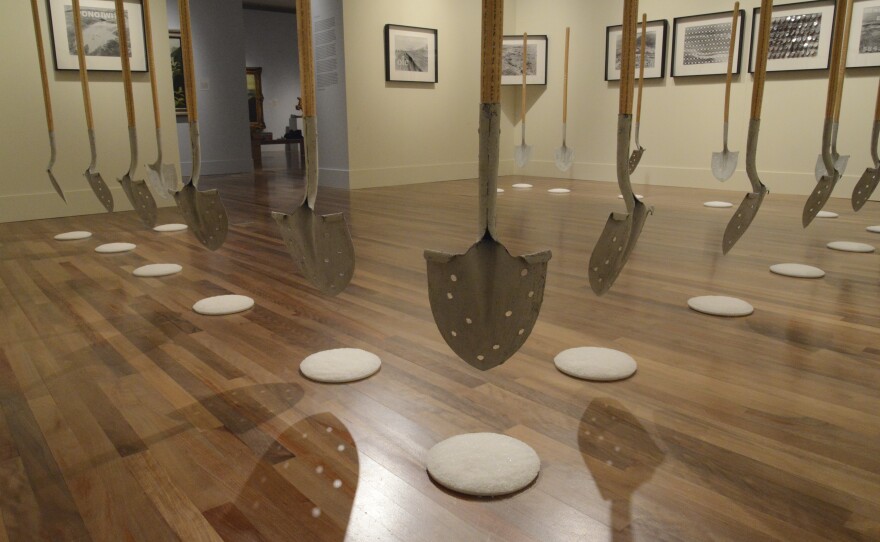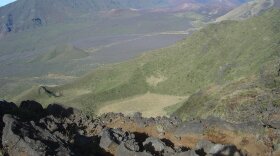
2013 closed with a wave of proposed developments, particularly on Maui and O’ahu, where commercial development has, at times, meant a clash between culture and change. An installation on view now at the Honolulu Museum examines the history of sand mining on Maui, linking it to the cement being poured on O’ahu. HPR’sNoeTanigawa reports.
“Ponoiwi”, an installation by Kapulani Landgraf, continues through January 19th at the Honolulu Museum. See the slide show here for a sample of images. Many more of Landgraf's singular photographs of Maui are collected in a volume entitled, "Na Wahi Kapu o Maui."
Kapulani refers to this quote from Dana Naone Hall:
"What we’re honoring is the intent of the family members who placed that individual in their resting place those many years ago, that they have a right to stay there, that is their home and we as living descendants must honor that right, and that in doing so we affirm who we are as a people and that we too have a place here and it comes from the bones of our ancestors."
You can find images and a little more on Kapulani Landgraf by the former gallery director of the Maui Arts and Cultural Center, Darrell Orwig, here.















